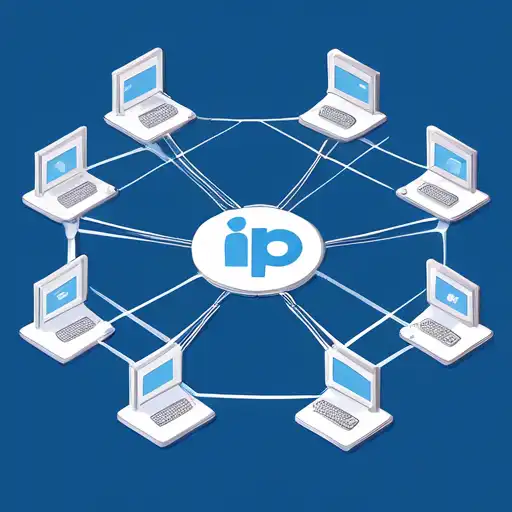Introduction to IP Addresses
In the digital world, an IP (Internet Protocol) address is akin to a home address for your device, allowing it to communicate with other devices on a network. Understanding the basics of IP addresses is crucial for anyone looking to grasp how the internet operates. This guide will walk you through the fundamentals of IP addressing, its types, and its significance in networking.
What is an IP Address?
An IP address is a unique identifier assigned to each device connected to a network that uses the Internet Protocol for communication. It serves two primary functions: identifying the host or network interface and providing the location of the host in the network.
Types of IP Addresses
There are two main versions of IP addresses in use today:
- IPv4 (Internet Protocol version 4): The most widely used version, consisting of four sets of numbers separated by dots (e.g., 192.168.1.1).
- IPv6 (Internet Protocol version 6): Developed to deal with the exhaustion of IPv4 addresses, it uses eight groups of four hexadecimal digits (e.g., 2001:0db8:85a3:0000:0000:8a2e:0370:7334).
How IP Addresses Work
When you request to access a website, your device sends a request to the website's server using its IP address. The server then responds by sending the requested data back to your device's IP address. This process happens in milliseconds, allowing for seamless browsing experiences.
Public vs. Private IP Addresses
IP addresses can be categorized into public and private:
- Public IP Addresses: Assigned by your Internet Service Provider (ISP), these are used to identify your device on the internet.
- Private IP Addresses: Used within a private network to identify devices, these are not routed on the internet.
Dynamic vs. Static IP Addresses
IP addresses can also be dynamic or static:
- Dynamic IP Addresses: Automatically assigned by a DHCP server and can change over time.
- Static IP Addresses: Manually configured and remain constant, ideal for servers hosting websites.
Why Understanding IP Addresses is Important
Grasping the concept of IP addresses is essential for troubleshooting network issues, setting up a home network, or pursuing a career in IT. It lays the foundation for more advanced networking topics and ensures a smoother online experience.
Conclusion
IP addresses are the cornerstone of internet communication, enabling devices to connect and share information across the globe. By understanding the basics of IP addressing, you're better equipped to navigate the complexities of the digital world. Whether you're a budding IT professional or just curious about how the internet works, this knowledge is invaluable.
For more insights into networking basics, check out our guide on Understanding DNS.
